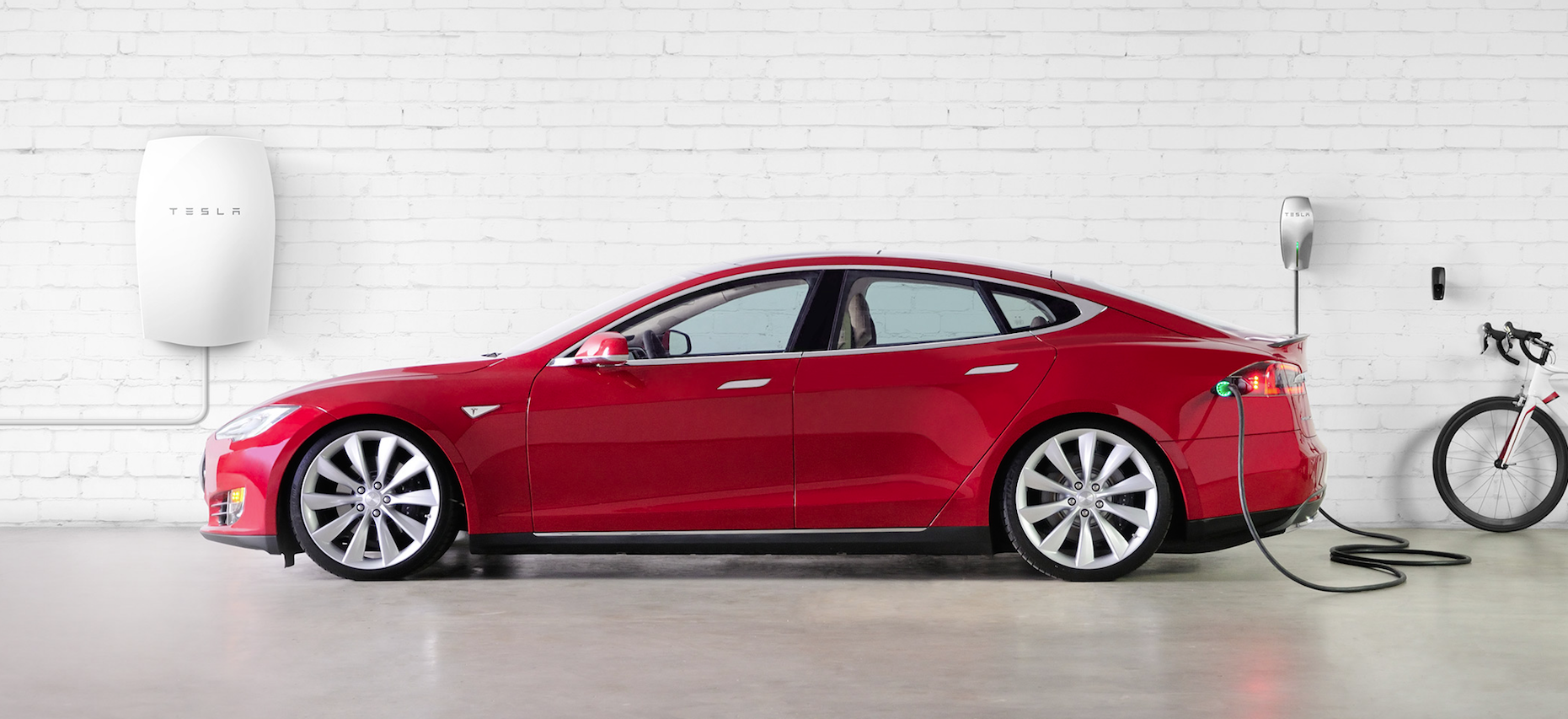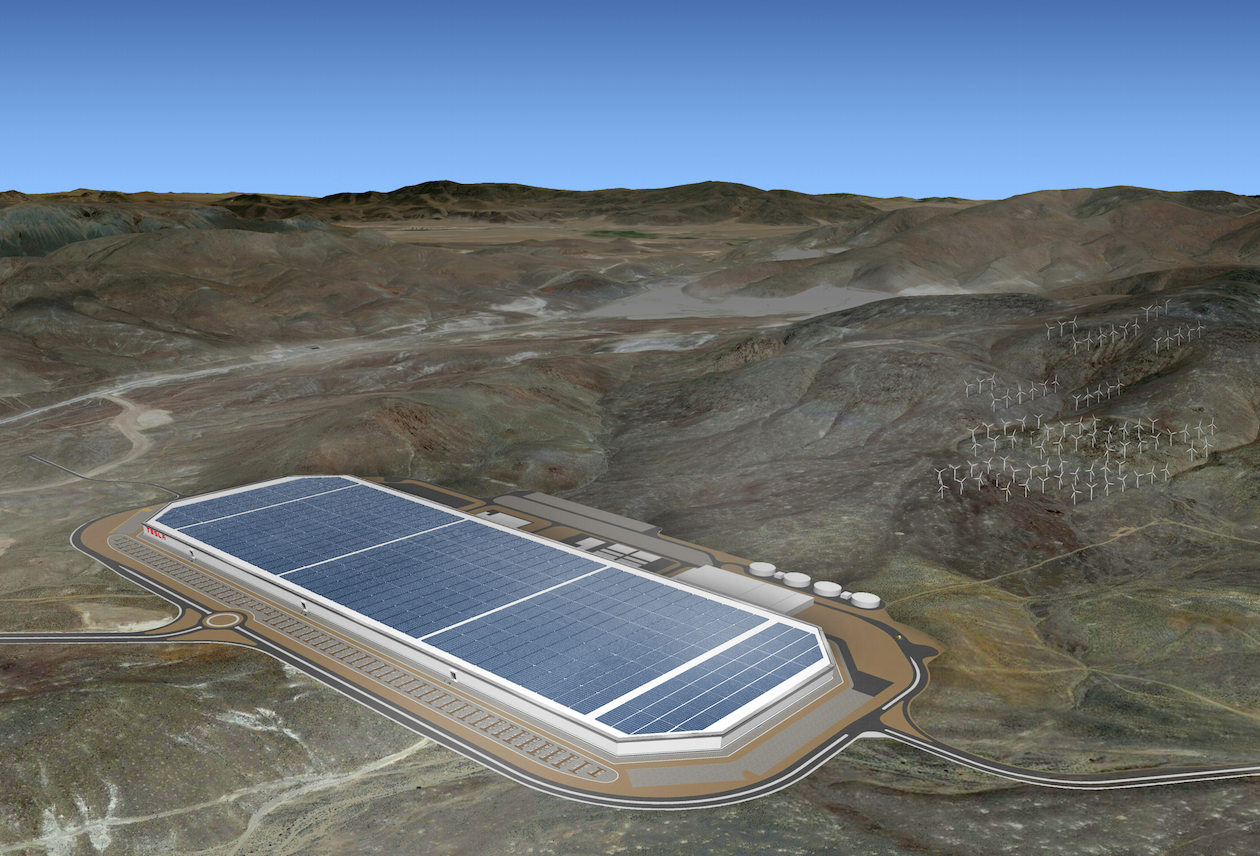In its latest Technology Outlook, oil and gas giant BP predicted batteries for vehicles and electricity-grid applications could have “significant potential to influence future fossil-fuel demand in the transport sector and enable greater penetration of intermittent renewable energy.”
A convergence of events is making batteries affordable and even desirable as catalysts for nudging consumers, industries, and nations from carboncentric energy consumption.
The Department of Energy’s Joint Center for Energy Storage Research is working on prototypes for transportation and the grid that, when scaled to manufacturing, would deliver five times the energy density at one-fifth the cost of commercial batteries available when the Joint Center launched in 2012.
What’s really put batteries in the spotlight, though, is the Gigafactory that Tesla Motors is building near Reno, Nev., and expects to open this year. When it reaches full capacity in 2020, this $5 billion, 13.6 million-sf plant could be producing enough lithium-ion battery packs annually to equal 50 gigawatt hours of storage, or more than what had been produced worldwide in 2013.
Tesla’s CEO Elon Musk told Fast Company that advancements in battery technology would be “incremental.” But Musk is confident his company can lower battery cost by at least 30% through mass production. “The fundamental focus is the cost per unit of energy,” he told Tech Insider.
 Last April, Tesla rolled out Powerwall, a rechargeable lithium-ion battery for residential use.
Last April, Tesla rolled out Powerwall, a rechargeable lithium-ion battery for residential use.
Last April, Tesla rolled out Powerwall, a rechargeable lithium-ion battery for residential use. One model, retailing for $3,500, offers 10kWh capacity for backup applications; a second model, for $3,000, has 7kWh peak capacity for daily-cycle applications. Tesla’s Powerpack, for commercial use, can store up to 100kWh of electricity, and retails for around $25,000.
Tesla positions batteries as less-expensive ways for homeowners and businesses to store power collected by solar PV arrays during the day for use at night. If battery energy storage proliferates, Musk believes that 10% of the world’s fossil-fuel power plants could be mothballed within years.
“The goal has not been: Let’s make cars; the goal has been: We need to accelerate the advent of sustainable energy,” Musk said. Still, Tesla is creating demand by expanding its electric-car plant in Fremont, Calif., to pump out 500,000 cars per year by 2020.
Batteries for energy storage are already elbowing their way into the commercial mainstream, says Garrett Fitzgerald, Senior Associate with the Rocky Mountain Institute. They are being deployed in the PJM wholesale electricity market for frequency regulation, and in California for demand-charge reduction to smooth out energy loads.
Janice Lin, Co-founder of Strategen Consulting and Executive Director of the California Energy Storage Alliance, foresees battery energy storage as the next tool for property managers to control energy, deliver services when occupants demand it, and make money in the process. And battery energy storage is economically feasible in markets where feed-in tariffs, which offer producers a set price for renewable energy returned to the grid, have been dropping.
A big part of Tesla’s game plan is to stimulate public acceptance of solar energy, which accounts for 1% of U.S. electricity output but is expanding. As of the second quarter of 2015, 22.7 gigawatts of solar capacity had been installed, and another 20,000 megawatts are forecast to come online in 2015-16, according to the Solar Energy Industries Association. Residential solar costs have dropped 45% since 2010, and utility-scale solar has fallen even more, to where recent contract prices are below 5 cents/kWh.
In its $1.1 trillion spending bill, passed on December 18, Congress included a five-year extension of the 30% solar investment tax credit, which was set to expire for residential and decline to 10% for commercial at the end of 2016. Bloomberg New Energy Finance had estimated that new commercial and industrial solar capacity would be nearly 18% less from 2015 through 2022 under a lower tax credit. New residential capacity would be 31% less without the tax credit.
Related Stories
AEC Tech | Feb 20, 2024
AI for construction: What kind of tool can artificial intelligence become for AEC teams?
Avoiding the hype and gathering good data are half the battle toward making artificial intelligence tools useful for performing design, operational, and jobsite tasks.
AEC Innovators | Jun 15, 2023
Rogers-O'Brien Construction pilots wearables to reduce heat-related injuries on jobsites
Rogers-O'Brien Construction (RO) has launched a pilot program utilizing SafeGuard, a safety-as-a-service platform for real-time health and safety risk assessment. Non-invasive wearables connected to SafeGuard continuously monitor personnel to prevent heat exhaustion on jobsites, reducing the risk of related injuries. RO is the first general contractor to pilot this program.
Office Buildings | May 15, 2023
Sixteen-story office tower will use 40% less energy than an average NYC office building
This month marks the completion of a new 16-story office tower that is being promoted as New York City’s most sustainable office structure. That boast is backed by an innovative HVAC system that features geothermal wells, dedicated outdoor air system (DOAS) units, radiant heating and cooling, and a sophisticated control system to ensure that the elements work optimally together.
K-12 Schools | May 12, 2023
In Virginia, a new high school building helps reimagine the experience for 1,600 students
In Virginia, the City of Alexandria recently celebrated the topping out of a new building for Alexandria City High School. When complete in 2025, the high-performance structure will accommodate 1,600 students.
Hotel Facilities | May 9, 2023
A new camping destination near Utah’s Zion National Park offers a variety of all-season lodgings and amenities
Outdoor lodging brand AutoCamp has opened a new camping destination near Utah’s Zion National Park. A 16-acre property, AutoCamp Zion is located between the Virgin River and the desert of Southern Utah.
Concrete Technology | Apr 24, 2023
A housing complex outside Paris is touted as the world’s first fully recycled concrete building
Outside Paris, Holcim, a Swiss-based provider of innovative and sustainable building solutions, and Seqens, a social housing provider in France, are partnering to build Recygénie—a 220-unit housing complex, including 70 social housing units. Holcim is calling the project the world’s first fully recycled concrete building.
Design Innovation Report | Apr 19, 2023
Reinforced concrete walls and fins stiffen and shade the National Bank of Kuwait skyscraper
When the National Bank of Kuwait first conceived its new headquarters more than a decade ago, it wanted to make a statement about passive design with a soaring tower that could withstand the extreme heat of Kuwait City, the country’s desert capital.
Design Innovation Report | Apr 19, 2023
HDR uses artificial intelligence tools to help design a vital health clinic in India
Architects from HDR worked pro bono with iKure, a technology-centric healthcare provider, to build a healthcare clinic in rural India.
Urban Planning | Apr 12, 2023
Watch: Trends in urban design for 2023, with James Corner Field Operations
Isabel Castilla, a Principal Designer with the landscape architecture firm James Corner Field Operations, discusses recent changes in clients' priorities about urban design, with a focus on her firm's recent projects.
3D Printing | Apr 11, 2023
University of Michigan’s DART Laboratory unveils Shell Wall—a concrete wall that’s lightweight and freeform 3D printed
The University of Michigan’s DART Laboratory has unveiled a new product called Shell Wall—which the organization describes as the first lightweight, freeform 3D printed and structurally reinforced concrete wall. The innovative product leverages DART Laboratory’s research and development on the use of 3D-printing technology to build structures that require less concrete.

















